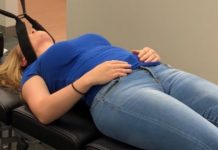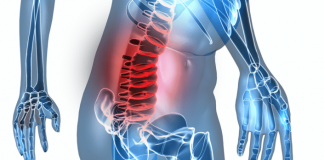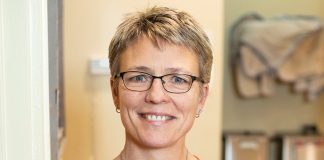Is there a right way to sit with sciatic pain? There is no right or wrong way to sit with sciatica pain, but there is a proper way to sit. It would be best if you were sitting flat-footed, evenly distributing your weight, and keeping up a regular walking schedule to help keep your sciatica pain from worsening. Also, take short breaks to stand up every 15 minutes or so.
What is the best position to sit for sciatica?
When you have sciatica, sitting is a difficult task. Sitting in the wrong position can aggravate the pain. The correct position depends on each person’s body, but there are some general guidelines you can follow. Here are a few examples:
The first thing you need to do is avoid bending your waist. This will stretch the sciatic nerve, so if you can, try to avoid it completely. Then, try to sit in a chair with an ergonomic design. An ergonomic chair can help alleviate the pain from sitting for long periods. This type of chair allows the user to sit with their back straight. It also supports the back and helps reduce pressure on the sciatic nerve.
Another important thing to remember is to sit straight. It supports the lower back and the buttocks, so you shouldn’t be bending forward. You may also consider buying a back cushion to balance your weight. Taking the time to sit upright reduces unnecessary strain on the back, neck, and chest. A good chair can also rotate the whole body. Remember that sitting straight may be uncomfortable, but it is better than crooked.
Is it better to sit or stand with sciatic nerve pain?
When dealing with sciatica, patients must learn which position is best for their situation. Most chiropractors recommend alternate sitting and standing. Depending on the position of your sciatica, standing can ease pain, and sitting can worsen it. Alternate between the two positions as often as possible to relieve pain and promote proper circulation. You can try this video to help you if you are having trouble standing.
Sitting too long can lead to sciatica pain, as it puts pressure on the glutes and lower back, irritating the sciatic nerve. Standing up often will give the sciatic nerve a break, stretch it, and allow the affected area to get the blood it needs to heal. Alternatively, try standing up and doing stretches for your back and legs to get the blood flowing and loosen tight muscles.
During a sciatica episode, ice, heat, and gentle stretches can help relieve the discomfort. Similarly, if you experience recurring sciatica, chiropractic treatment may be able to correct misaligned joints and bones. This treatment may also address lifestyle and postural problems that cause sciatica. This is especially helpful for people experiencing sciatica due to a herniated disc.
Is there a pressure point for pain relief?
One of the best places to start when looking for sciatica pain relief is by finding the trigger point, which is located on the outer side of the lower leg, just below the crease formed by many tendons. The trigger point is best triggered first thing in the morning when the legs are at their most relaxed. Once you find it, gently massage it for a minute or two.
Another pressure point for sciatic nerve pain relief is the GB-30 acupoint, located one-third of the way between the sacrum and the hip. This point is found in the outer hip buttock region. To locate it, bend your leg, as shown in the diagram above. The sole of your leg will naturally point toward the GB-30 pressure point. You can also use a tennis or spiky ball to reach this pressure point. If this is difficult, try massaging for a minute or two.
There are also a variety of acupressure points you can try. One such technique is a self-administered method that involves squatting and applying pressure to the entire sciatic nerve. The total pressure applied to the nerve should be at least 10-20 kg/hand. The pressure applied to the nerve area is an important factor in sciatica pain relief.
How do you Unpinch a sciatic nerve?
If you suffer from the painful symptoms of sciatic nerve pain, you may be wondering what you should do to get some relief. This article outlines a few ways to relieve sciatica pain and get back to your active lifestyle. First, find the source of your pain. You may have a pinched sciatic nerve if you’re suffering from sciatica. In this case, the pain will be felt in the lower back area. It can also be felt in the buttock or the posterior part of one leg.
Alternate applying ice and heat to the area is another way to relieve sciatic nerve pain. Ice reduces inflammation, while heat encourages blood flow to the affected area. Heat can also ease painful muscle spasms associated with sciatica. Apply ice or heat alternately for about 30 minutes to an hour to see results. Always use a barrier on the area, and avoid sleeping while applying ice or heat to your sciatic nerve.
The next method involves stretching the legs. To stretch the buttocks and back, you can sit flat on a chair with your feet on the floor. Then, stretch the affected leg by bringing the foot under your stomach and bending the knee toward the ceiling. Continue holding this position for 30 seconds and switch legs. If this doesn’t work, try lying on your back while sitting with your knees up.
What part of the foot do you rub for sciatica?
Sciatica is a pain in the lower back’s sciatic nerve. It runs down the leg and buttocks, connecting the spinal cord to the lower extremities. If the sciatic nerve is compressed or irritated, it can lead to shooting pain, tingling, or weakness down the leg.
Research shows that certain points on foot can alleviate sciatic pain. The spine has reflex points along the inner and outer edges of the foot. By stimulating these points, back pain therapy can be a great option. In addition, the foot can be used as a therapeutic tool for sciatica relief. Massage therapy is another popular form of treatment. Massaging the foot can reduce the symptoms of sciatica and improve the lower body’s function.
Reflexology is an excellent complement to traditional treatments. While it may seem simple, it is best to see a professional if the symptoms are severe or recurrent. The foot reflexologist will use different techniques, including finger-walking. These techniques release pressure and inflammation on the nerve near the spine. You will be able to enjoy your pain-free life again! What part of the foot do you rub for sciatica?
How do you stop sciatic pain when sitting?
One of the most important tips for reducing sciatic nerve pain while sitting is to adjust your chair to allow for enough legroom. Some chairs have adjustable seat depths, so your knees mustn’t rest on the edge. Proper sitting posture also helps relieve pain by reducing unnecessary exertion on the back, neck, and chest. Then, make sure your chair has a swivel feature, allowing you to turn your entire body while sitting.
Another tip for reducing sciatica pain while sitting is to move to the front of the seat. Sitting for long hours puts pressure on your glute muscles and lower back, aggravating the pain. Getting up and walking around can help to ease pain and provide relief. Standing desks and other alternatives for sitting up are available for office workers. Try performing stretches and yogic breathing exercises to relax your back and legs.
An ice pack or heating pad on the painful area can help reduce inflammation and pain. Alternating heat and cold can also help to reduce muscle spasms. Curcumin is a powerful natural anti-inflammatory substance that helps the immune system and reduces inflammation in the body. Try curcumin supplements to improve your overall health and prevent sciatica pain. You can seek medical advice if these do not help.
How do you sit with a sciatic nerve flare-up?
If you have sciatica, you know that sitting for long periods can cause pain and discomfort. Your lower back is compressed by discs that pinch the sciatic nerve. To relieve pain and inflammation, you should get up and walk around. Also, avoid bending at the waist. When sitting in a chair, slide to the front and stand by straightening your legs. You can also try using ice packs or ice wrap.
It is also possible that your posture is contributing to your sciatica. Maintaining the same position for an extended period may aggravate the condition. It’s also a bad idea to stand for some time. This will give your lower back and glute muscles a break, which will help the sciatic nerve stretch and increase blood flow. Try standing up from your desk, if you have one, and stretch your back and legs frequently.
If you must sit, try bending your knees at the hips and thighs. This will stretch your hip and sciatic nerve. Hold this position for at least 30 seconds without lifting your hips. Repeat this stretch on the other side if possible. If sitting for long periods has no result, try icing your lower back. If it makes you uncomfortable, ice it immediately.
Conclusion
Walking can be difficult and even painful if you suffer from severe sciatica. It is recommended to seek professional medical advice when you experience sciatica symptoms. They may recommend exercises and other lifestyle changes to help ease sciatica symptoms. Sciatic nerve pain encompasses a range of symptoms and can have several causes. There are several underlying conditions that can contribute to the condition, such as herniated or degenerative discs, spinal stenosis, misalignment of the lumbar spine or sacroiliac joint (at the base of your spine), or tightness in the piriformis muscle, which is located under your glutes. Stretching, yoga, walking, and physical therapy can help diminish some of your leg pain. The nerve glide exercise is a useful exercise for herniated discs that can be performed while you’re seated in your office.
In order to reduce sciatic nerve pain, most experts suggest a few common sitting practices. You may also find relief from sciatica pain by stretching your leg muscles while sitting. Try moving your legs while seated. The ones within your control are the severity, chronicity, and duration of pain. To recover quickly, remove all the things that worsen your pain. The longer you have severe pain, the more likely you will develop long-lasting pain.

Doctor Osvaldo Pepa, Neurosurgery Service Physician at Hospital San Martin, La Plata, Argentina. I graduated last November 16, 1984 with a Medical Degree at the Universidad Nacional de La Plata. The Medical Board of La Plata, District 1, licensed me as a Neurosurgeon in 1990. I hold a Provincial and National License and an active member of the Neurosurgery Society of La Plata, World Ozone Therapy Federation, and Inter American Society of Minimally Invasive Surgery.






